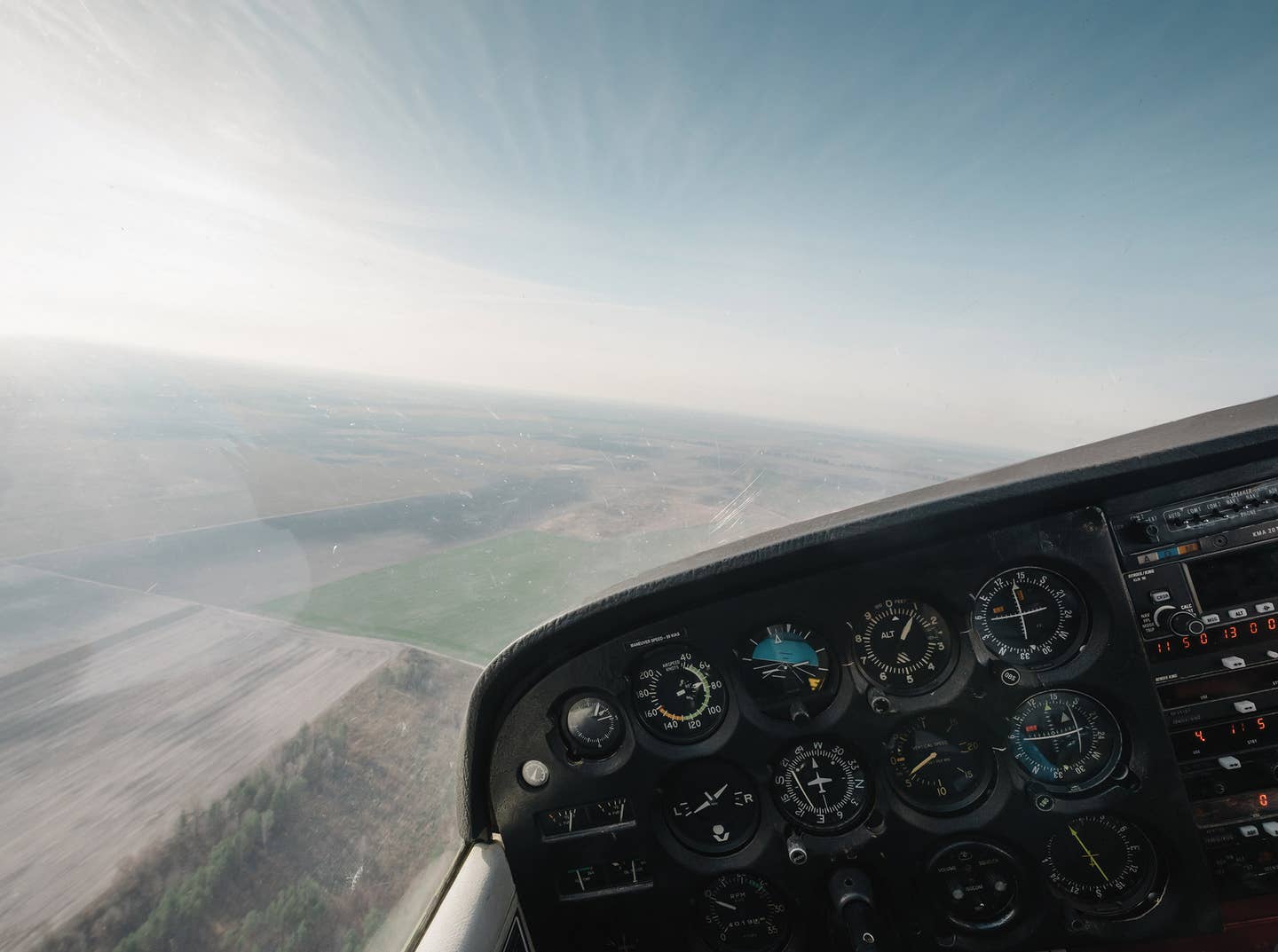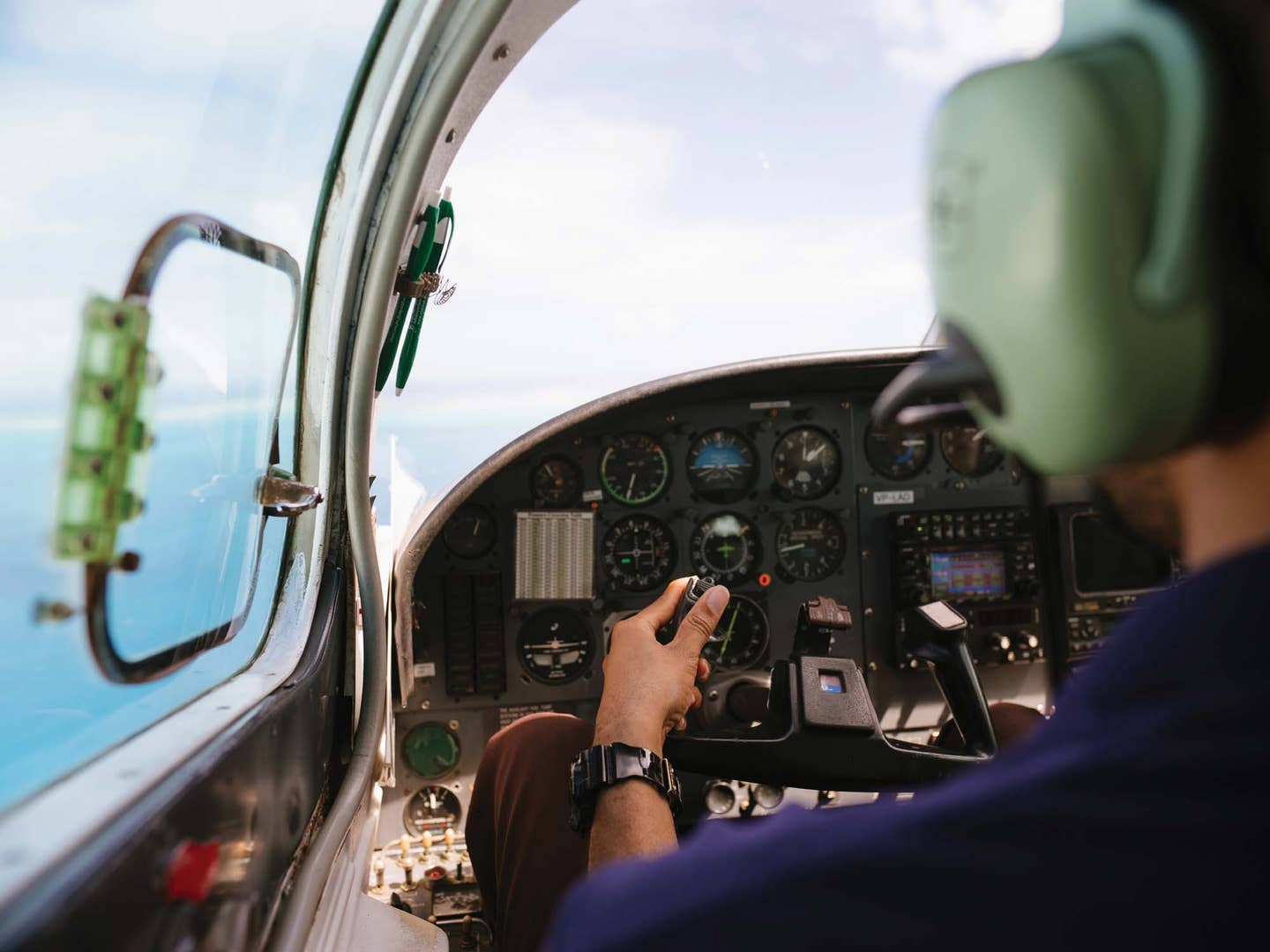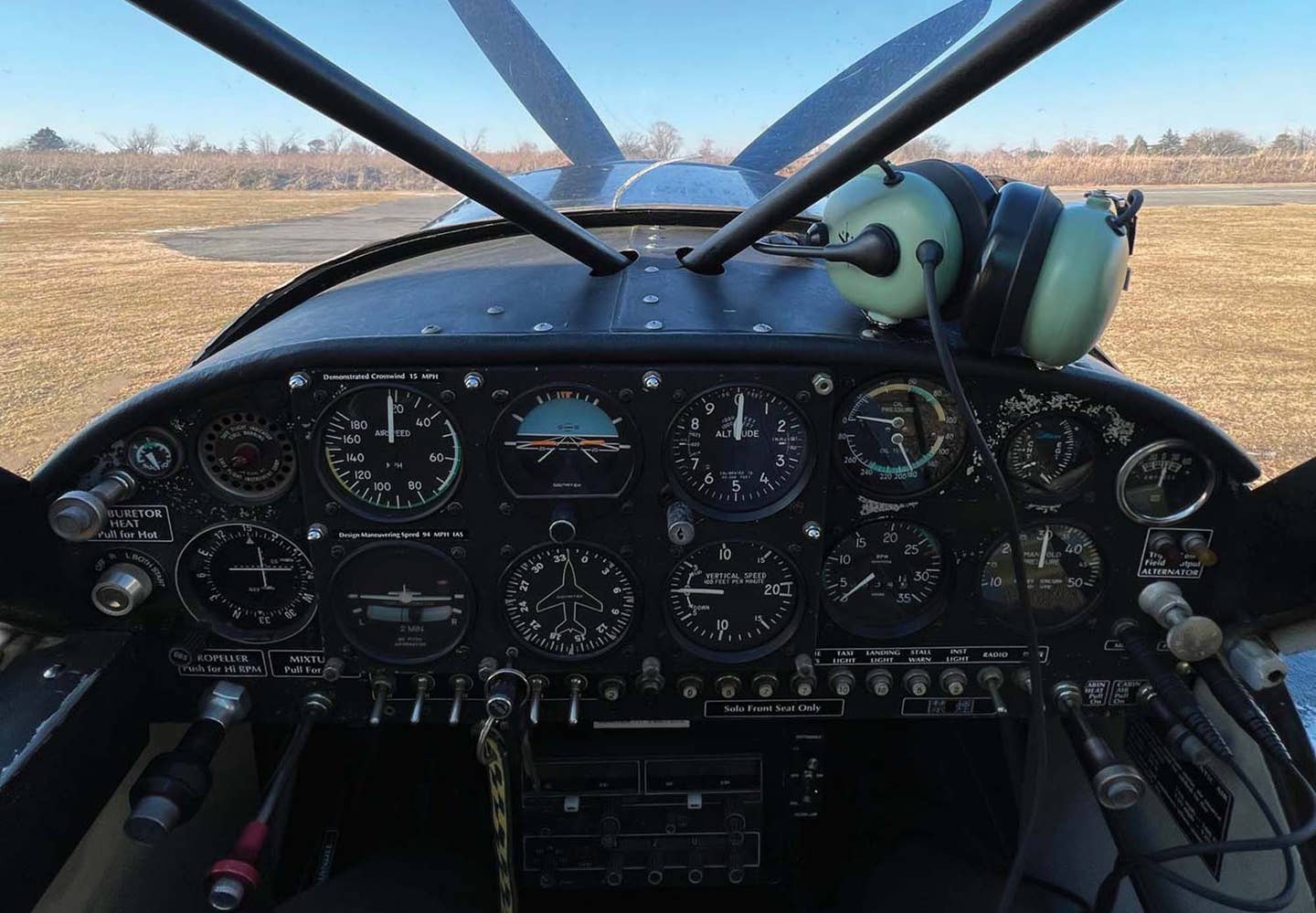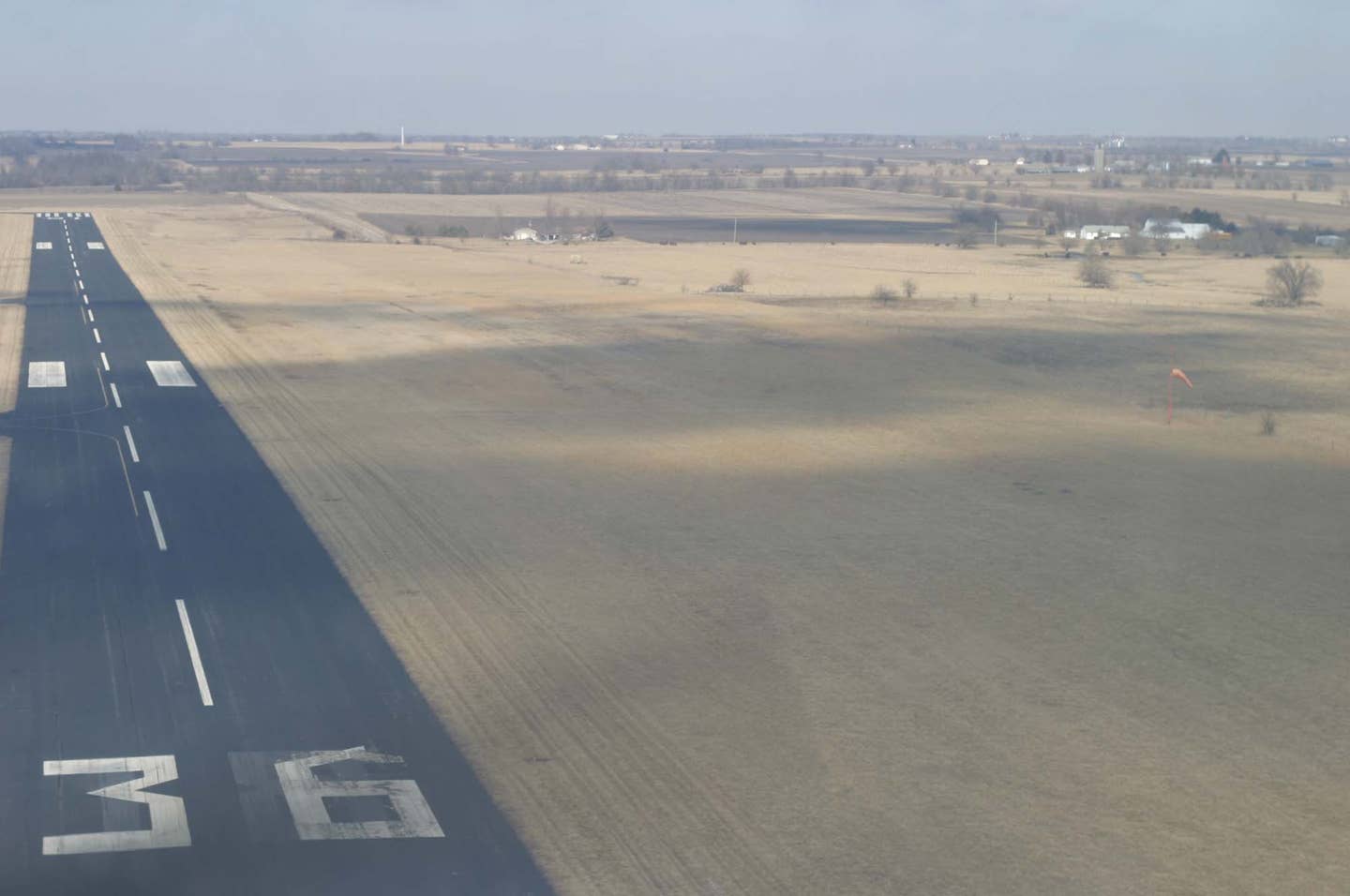After the Accident: VFR Departure
“You don’t want to go today. It’s really cruddy up there,” the just-landed Beech Bonanza pilot told another pilot at Western Carolina Regional Airport (KRHP) in Andrews, North Carolina, on…

[Photo: Adobe Stock]
“You don’t want to go today. It’s really cruddy up there,” the just-landed Beech Bonanza pilot told another pilot at Western Carolina Regional Airport (KRHP) in Andrews, North Carolina, on the afternoon of October 3, 2021.
His arrival wasn’t pretty. The Bonanza pilot didn’t follow the published traffic pattern, placing the aircraft close to rising terrain on downwind. He was too fast on final approach, and he went around on the first attempt. A police officer arrived to check on the airplane, as the pilot had reported to ATC that he was low on fuel. Still, he was safely on the ground.
That was when the second guy approached and chatted about the chances of getting home. He recalls how the Bonanza pilot and his wife were both wearing red, matching their V-tail S-35. The first pilot’s advice was to stay in Andrews overnight. Heeding the warning, unhappy with the weather, the second pilot drove away.
The Bonanza pilot didn’t stay the night. He purchased 60 gallons of fuel and got a weather briefing. He later departed, crashing before making it out of the valley. The National Transportation Safety Board (NTSB) final report details departure planning issues—and one cockpit switch in the wrong position.
READ MORE: After the Accident: A Deadly Ditching
The accident pilot had 2,100 hours logged in more than a decade of flying. Almost all that time had been in a four-seat, fixed-propellor, fixed-gear Piper PA-28 Cherokee. He held a single-engine private pilot certificate with an instrument rating. In June 2021, he had purchased the 1965 Beechcraft S35 Bonanza, which required complex and high-performance training. An instructor flew with him for about 15 hours, reporting the new owner wanted to do everything “by the book” and was a very competent pilot. By the time he landed in Andrews, he had about 50 hours in the S35.
Bonanzas are six-seat, single-engine, retractable-gear planes—solid cross-country machines. First produced in 1947, they’ve been in continuous production longer than any other aircraft in history. The NTSB found no preexisting mechanical issues with the plane. The pilot’s executive assistant told the NTSB: “He did not allow anyone else to borrow or use his airplane. He was very meticulous about his airplane.”
The IFR trip had started in Liberty, Texas, with the goal of reaching Lancaster, Pennsylvania. A stop was planned at the Macon County Airport (1A5) in Franklin, North Carolina, but deteriorating weather led to the diversion into KRHP, east of a stationary front.
Low-altitude temperatures were in the mid-60s, close to the dew point. Cloudy skies with light rain predominated. At 6:49 p.m., the pilot called Leidos Flight Service for a standard IFR briefing to immediately leave KRHP for Lancaster Airport (KLNS). The briefer led with, “All right. Looks like convective SIGMET area for thunderstorms that’s coming up on you from the south as we speak. Looks like the sooner you can get out of there the better.”
Radar was showing heavy rain moving in, and there were other convective SIGMETs. “But looks like you can stay between those two, especially if you can get out before this next group that’s down toward the border moves in on you.” The briefer continued: “The adverse weather is mountain tops obscured in the higher terrain pretty much for your entire route of flight. … This is not going to be a VFR day today because I’m showing VFR, IFR, marginal VFR, and even a couple of low IFR spots within [a] 25-mile radius of your entire route.”
The pilot told Leidos: “I’m looking outside now. We should be able to get out of here. We can leave in five or six minutes. … Probably looks like we can get out of here VFR. Let’s go ahead and file an IFR flight plan. I’ll pick it up in the air.” Asked for a routing, the pilot said he’d have to look at his iPad, but he had left it somewhere. He requested direct KLNS, 466 nm away.
An hour later, at 7:45 p.m., he departed VFR from Runway 8 at Andrews. The airport AWOS was reporting calm winds, visibility 7 miles, moderate rain, scattered clouds at 1,400 feet, overcast at 3,200 feet. That’s legally VFR. But the steep hills around the airport would have been hidden—and night was falling.
The sun had set at 7:16 p.m. Civil twilight time officially ended at 7:41 p.m.. Terrain a few miles to the north of the field rose over 3,000 feet above the field elevation. After takeoff, he turned 45 degrees left to a heading approximately that for direct to KLNS. Groundspeed was 95 to 100 knots, climb rate around 700 fpm.
At 7:49 p.m., 5 miles from the airport, the Bonanza collided with tall pines close to the ridgeline, coming to a stop inverted at 3,650 msl. The pilot and his wife both died in the crash. The NTSB found the probable cause to be “the pilot’s decision to fly toward rapidly rising, obscured mountainous terrain after departing [VFR] at night.”
Andrews has a published IFR departure procedure: “Remain within 3 nm of Western Carolina [Regional] while climbing in visual conditions to cross airport westbound at or above 4,900. Then climb to 7,000 via heading 251[degrees] and HARRIS (HRS) VORTAC R-356 to HRS VORTAC before proceeding on course.” This track guarantees ground clearance but requires a ceiling above 3,400 feet and 2 miles visibility. It also wasn’t a legal option, as the procedure was “NA [Not Authorized] at night.”
Still, he might have cleared the hills but for one thing. The NTSB observed the landing gear appeared to be extended at impact. The gear lever was in the down position.
A fear for any retractable gear pilot is landing with the gear up. But pilots must also remember flying with gear down limits airspeed, increases fuel burn, and hurts climb performance.
Testing with an X-Plane 12 simulator with the reported parameters shows gear position makes a huge difference for this scenario. Repeatedly, I departed Runway 8, at pattern altitude turned to 045 degrees, brought the power back to 25 inches manifold pressure, and maintained a climb speed of 90 to 100 knots. Bringing the gear up after takeoff, I always cleared the ridgeline, averaging 4,500 feet msl. With gear down,
I always crashed, often at 3,600 feet.
READ MORE: After the Accident: Hard Deck Lessons
Habit, checklist discipline, and listening to your airplane are the principal ways to ensure gear retraction after takeoff. That said, writing about gear position and performance is easy compared to remembering to move that lever in a new plane in bad weather. There’s a fundamental difference between giving advice and following it.
Giving advice is like seeing a bear in your neighbor’s pool and texting they need to get it out. Following advice requires shooing the bear. The accident pilot’s friendly recommendation was: “You don’t want to go today. It’s really cruddy up there.” As the other pilot later told the NTSB: “Unfortunately, he did not heed his own advice.”
Editor's Note: This story originally appeared in the November/December 2023 issue of Plane & Pilot magazine.

Subscribe to Our Newsletter
Get the latest Plane & Pilot Magazine stories delivered directly to your inbox






